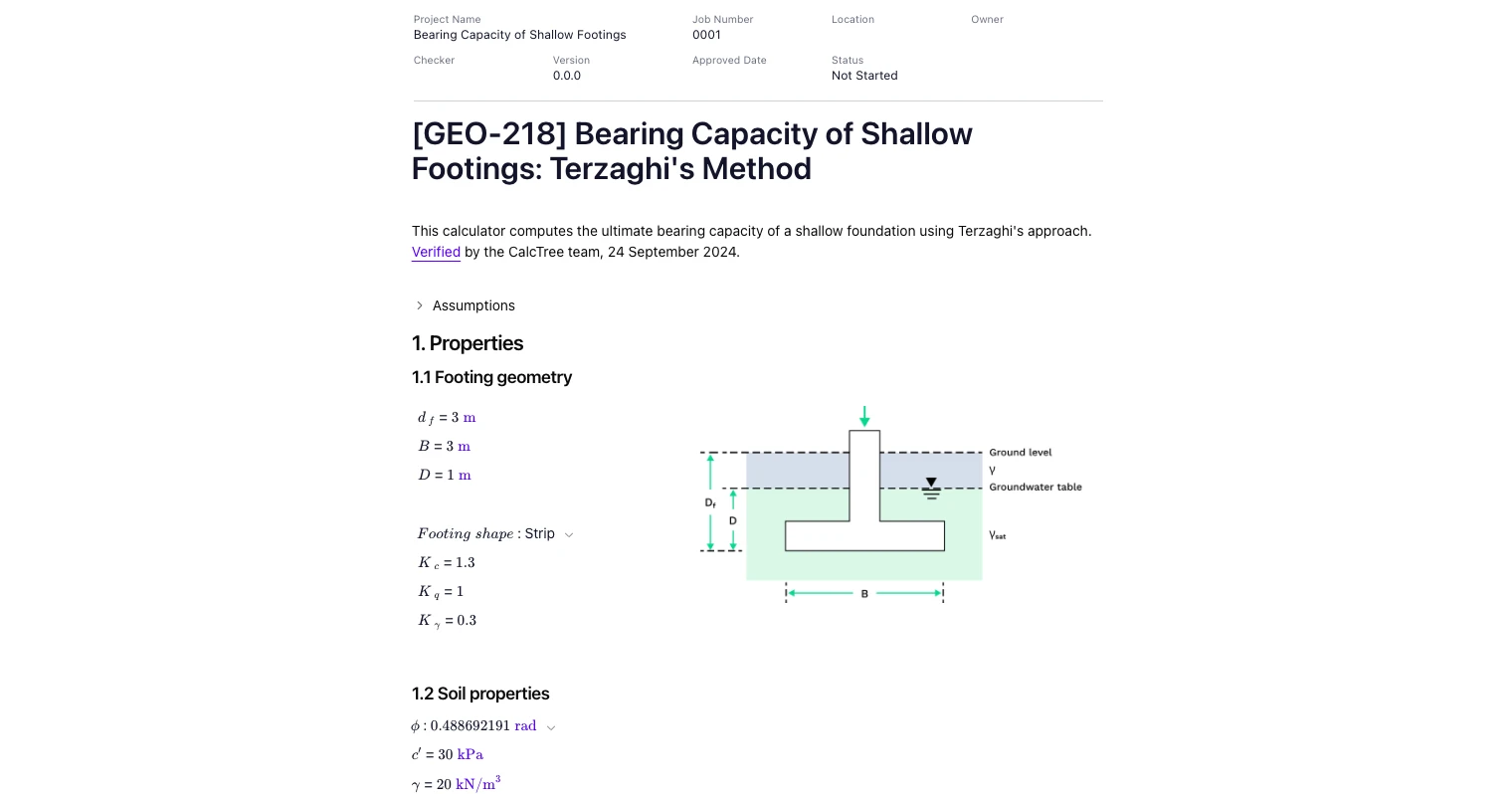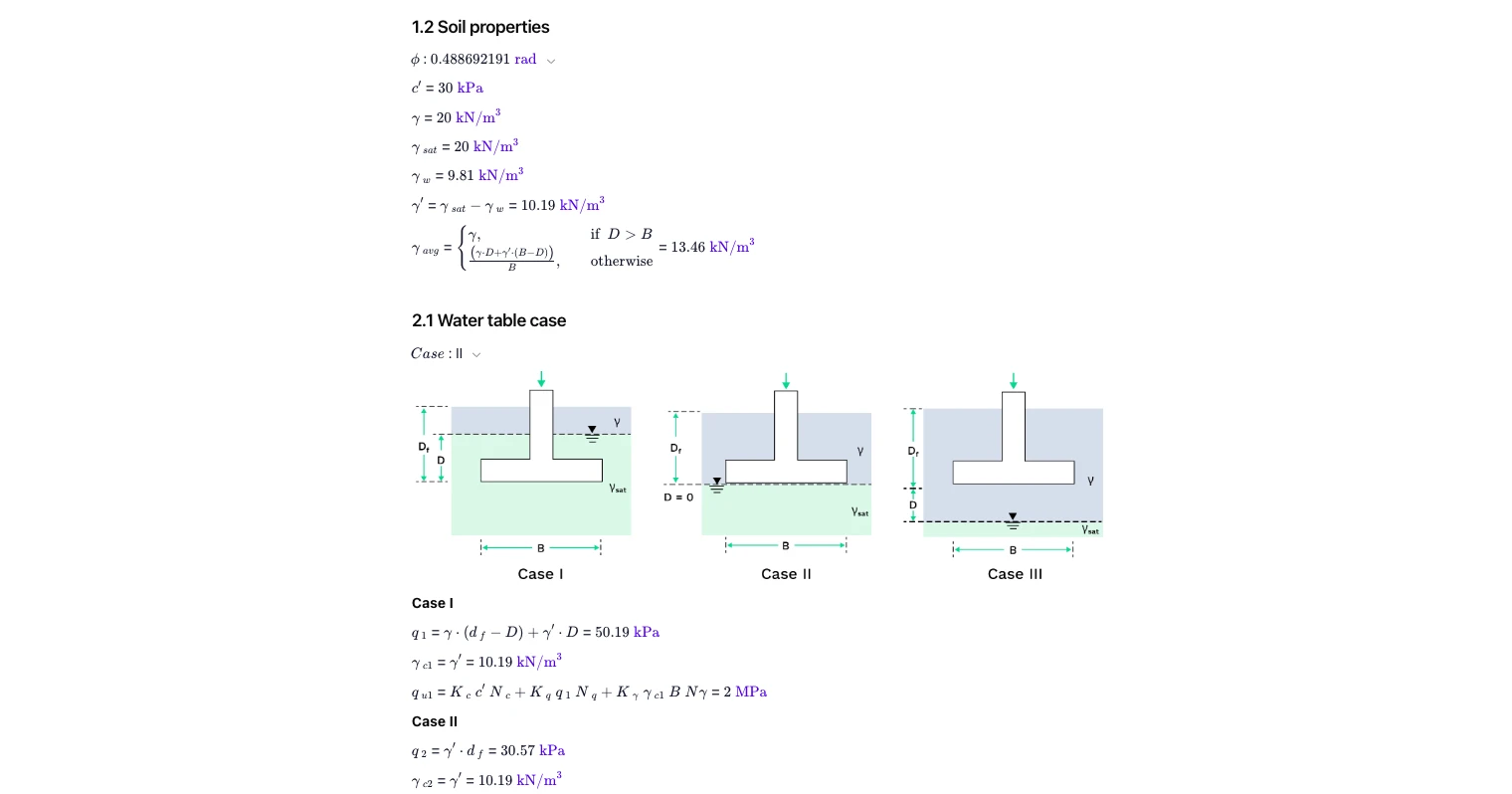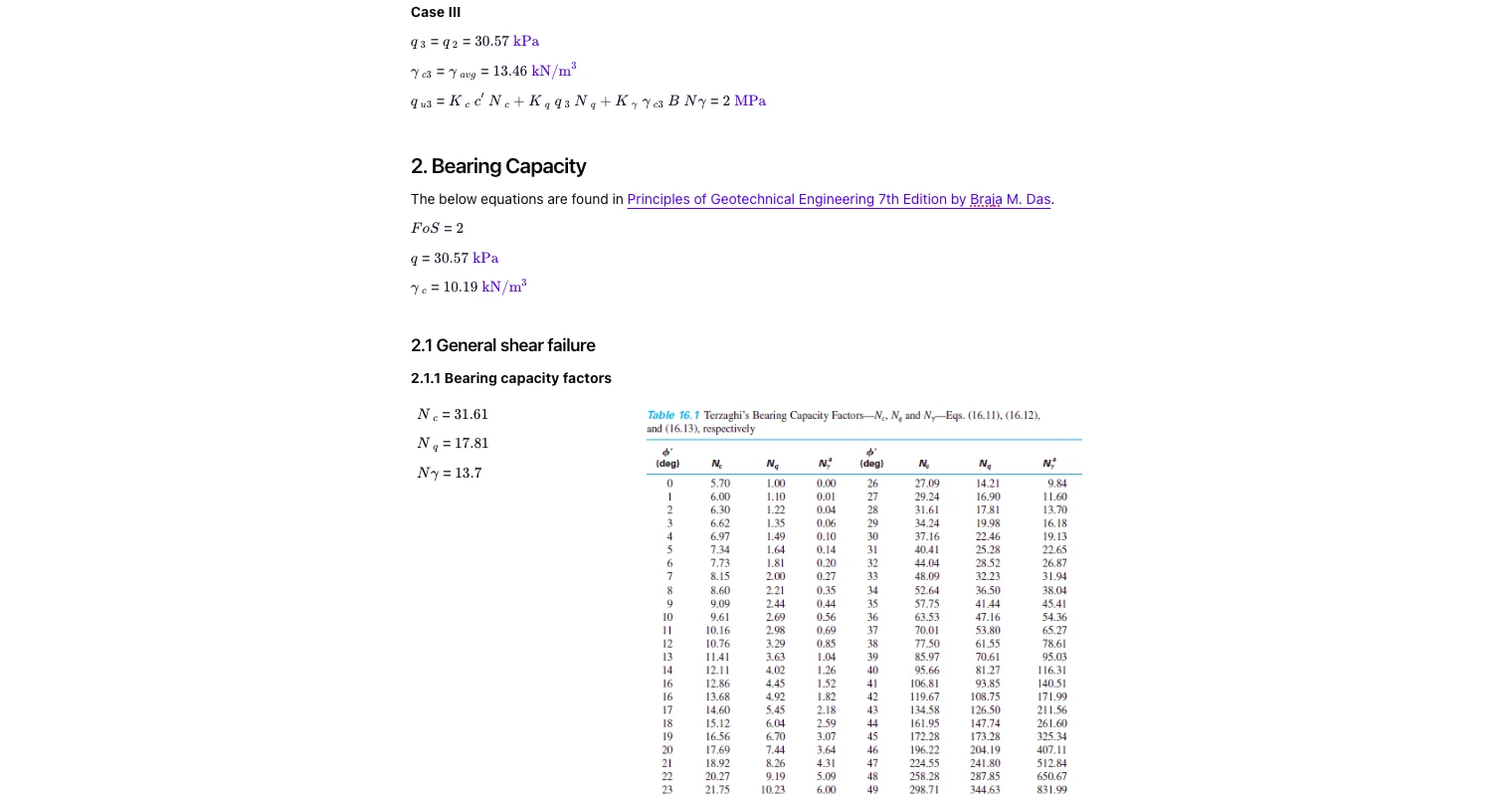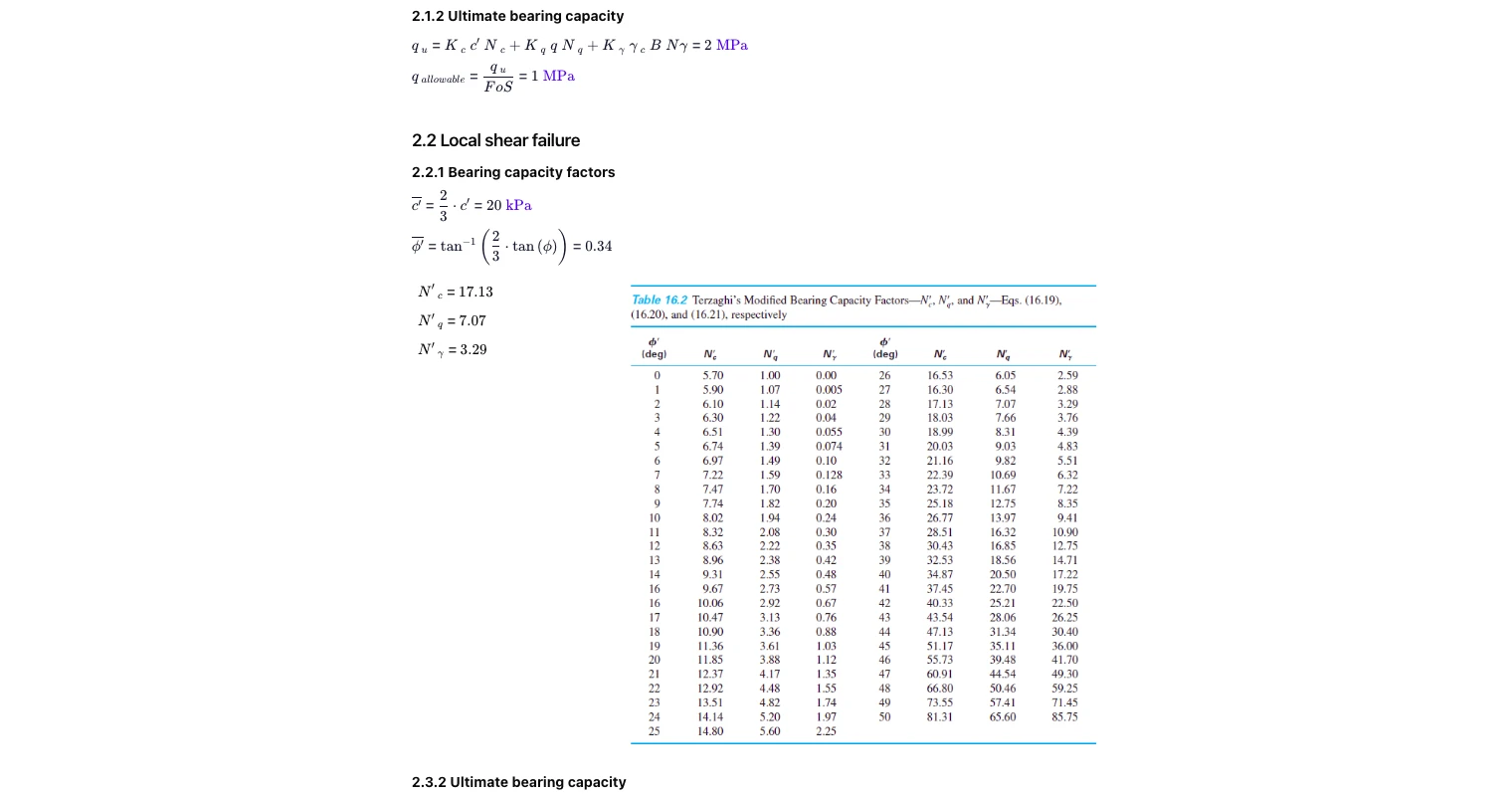Free Bearing Capacity of Shallow Footings Calculator: Terzaghi's Method. Step-by-step, engineering-grade tool with downloadable report.

This template is not available yet. You can sign up and create it yourself!
Or let us know if you'd like to be notified when it’s ready:
About this Terzaghi Bearing Capacity Calculator
This calculator determines the ultimate and allowable bearing capacity of a shallow foundation using Terzaghi’s approach. It handles geometry, soil parameters, water-table location, and both general and local shear cases.
- Geotechnical engineer: Quickly evaluate site options by varying soil strength, unit weights, and groundwater conditions without rebuilding spreadsheets.
- Structural engineer: Confirm subgrade pressure limits for strip or pad footings before sizing superstructure elements.
- Civil designer: Run scenario checks on footing depth and width to meet bearing and settlement constraints during early layout.
It’s an engineering-grade tool with clear inputs/outputs, based on textbook equations and tables, and ready to duplicate or adapt to your internal workflows.
More info on Terzaghi Bearing Capacity Calculator
Inputs: footing geometry and shape factors
Define footing embedment depth, width, and influence depth. Select footing shape (e.g., strip). Corresponding shape factors Kc, Kq, Kγ are applied automatically. Diagrams guide the meaning of each dimension for quick data entry. You can clone this page and standardize inputs based on your company's requirements.
Inputs: soil properties and effective unit weights
Enter effective cohesion, friction angle, total and saturated unit weights, and water unit weight. The calculator computes submerged unit weight and an average effective unit weight beneath the base using the conditional expression shown in the sheet, so surcharge and self-weight terms are consistent with Terzaghi’s method.
Water-table corrections (Cases I–III)
Select the groundwater position relative to the footing base. The tool switches between typical cases:
- Water above base,
- Water at base,
- Water below base.
Each case adjusts surcharge and unit-weight terms accordingly and shows a sketch for clarity.
Bearing capacity factors and failure modes
The calculator pulls Nc, Nq , Nγ from Terzaghi’s tables based on the entered friction angle. It evaluates:
- General shear failure using the classic bearing equation with surcharge, cohesion, and unit-weight components and the chosen shape factors.
- Local shear failure using modified strength parameters and corresponding factor tables.
Finally, it reports ultimate capacity and computes allowable capacity using your chosen factor of safety.
Common Calculation Errors to Avoid
- Using total instead of effective unit weight when the water table influences the zone beneath the footing; apply submerged unit weight where required.
- Ignoring water-table location and leaving a default case selected; always select the correct case so surcharge and unit weight are adjusted.
- Mixing shape factors not applicable to the chosen footing type; ensure the selected footing shape matches the factors Kc, Kq, Kγ.
- Applying general shear factors for local shear conditions; for weaker or highly compressible soils, use the modified parameters and tables.
- Forgetting the factor of safety when reporting allowable bearing capacity; ultimate values are not design-ready.
- Entering inconsistent units across inputs; keep units consistent to avoid spurious capacities.
Engineering templates
Common calculators
Design guides
FAQs
What footing types does this Terzaghi calculator support?
It’s set up for shallow foundations (e.g., strip or pad). Selecting the footing shape applies the correct shape factors in the bearing equation.
How does the tool handle groundwater effects?
You choose one of the standard water-table cases. The calculator adjusts surcharge and unit-weight terms and uses effective weights where appropriate to reflect buoyancy.
When should I use local shear instead of general shear?
Use local shear when soils are relatively loose/soft or where stress-strain response suggests limited peak strength. The calculator automatically applies modified parameters and factors for that mode.
Can I change the factor of safety?
Yes. Enter your preferred factor of safety and the tool converts ultimate capacity to allowable bearing pressure accordingly.
Where do the bearing capacity factors come from?
They are taken from standard Terzaghi tables as published in geotechnical references. The tool maps friction angle to the corresponding Nc, Nq, Nγ (and their modified forms for local shear).
Can I reuse this setup across projects?
Absolutely. Duplicate the page, preset your firm’s defaults, and share it with your team so everyone runs the same checks.
For a deeper understanding of Terzaghi’s method, consider the following references:
- Soil Mechanics in Engineering Practice by Karl Terzaghi, Ralph B. Peck, and Gholamreza Mesri
- Principles of Geotechnical Engineering by Braja M. Das
These texts provide foundational insights into bearing capacity theories and their practical applications.
Learn about the benefits of using CalcTree on engineering projects!







